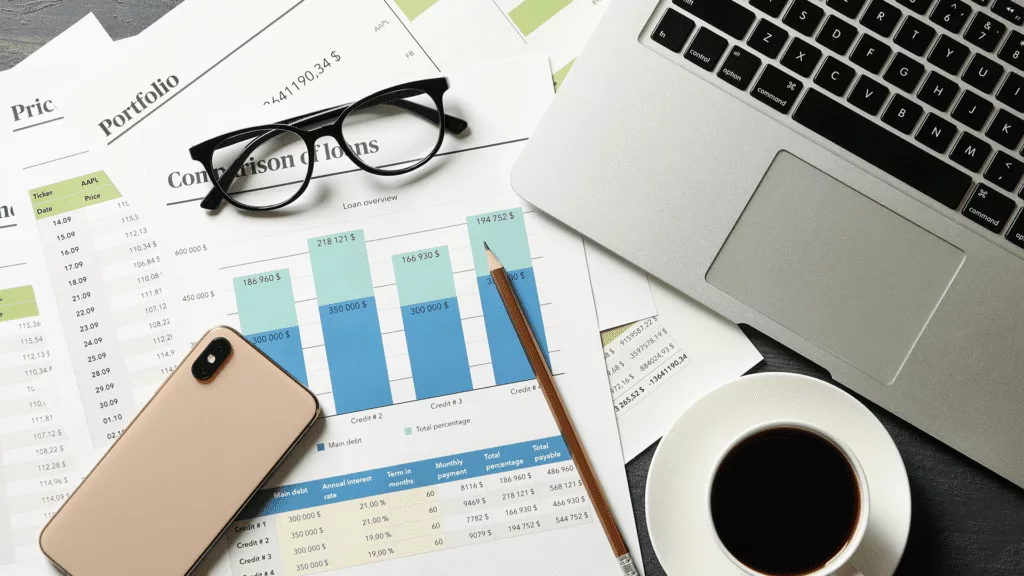Written by: Corey Janoff
This post was originally published on our previous blog website on August 28th, 2018 and has since been revised and updated.
I’m not a fan of budgeting. Budgets generally don’t work for people. You either go over the budget, or you end up spending more than you otherwise would reach your monthly allotment. Spending is more fun. So when I work with clients, I do a monthly spending analysis with them to see where dollars are flowing. This helps create awareness of certain spending habits and helps us plan for future goals.
After analyzing monthly spending, if there is enough money left over each month to cover an additional desired expense, then we are good to go. If there is not enough money left over, we can discuss areas we can make adjustments to make room for the desired expense.

Where to Start in Analyzing Spending
First off, for any of this to work, you have to be honest with yourself. You can say you only spend $300/month on entertainment and dining out, but if your credit card history shows you spend $1,000/month, the analysis won’t be very accurate. That is why those online programs that track your spending habits and automatically categorize them for you can be beneficial.
If you use one of those programs, that is great. It is smart to review your expenses every week to make sure the program categorized things correctly. You might find it accidentally put a restaurant bill in the grocery category. You should be able to manually correct things.
Once you grasp your monthly expenses, I like to consolidate them into a handful of categories, and I split the categories up between fixed expenses and flexible expenses. Fixed expenses are things you have to pay each month, such as your mortgage and your car loan. Flexible expenses are things that can vary, and you have more control over them. Not everyone will have expenditures in all of these categories, so it is OK if the amount is $0.
Below are main categories I use for fixed expenses:
- Mortgage/Rent (include taxes, insurance, and HOA payments).
- Utilities (including phone, cable/internet).
- Car payments (loan and/or lease).
- Gas/transportation/maintenance (gas, parking, tolls, cabs, Uber/Lyft, subway, oil changes, etc.)
- Auto & Umbrella liability insurance
- Disability & life insurance
- Groceries/Personal items
- Student Loans
- Childcare/Child-Related Expenses (daycare, school, nanny, activities, etc.).
Below are the main categories I use for flexible expenses:
- Entertainment/Dining Out
- Travel/Vacations
- Miscellaneous
Depending on how controlled one’s expenditures are, I may detail that miscellaneous category. For example, I may include separate categories for a housekeeper, landscaper, gym membership, doggy daycare, haircuts, charity, etc. If you can track it, you can manage it. Sometimes we have to make some hard cuts.

What to Look for in Monthly Spending Habits
There are several things I look at when analyzing one’s monthly expenses. The first thing is, usually student loans. If you have student loans, there isn’t much you can do about them other than paying them off (or get someone else to pay them off for you). Whatever that monthly payment is, we have to work around it. There can be some alternative payment options to reduce the required monthly payment potentially, but regardless, the monthly payment is likely going to be a sizeable amount.
The next thing I look at is housing expenses. Housing is likely the most significant expense you will have in your life, and for the most part, you get to decide how expensive it will be. As a general rule, I like to see monthly housing costs below 20% of gross income (sometimes less, depending on what other expenses/goals you have). So if you earn $10,000/month ($120k/year) before taxes, I would prefer to see your house payment below $2,000/month.
Why only 20% when a bank will let you spend up to 43% of your gross income on a mortgage as long as you don’t have any other debt? I have written about housing before, and we will discuss it often on this blog, but the short answer is: so you can afford to reach your other goals in life. The amount you spend on your home will either enable you or prohibit you from achieving all of your financial goals in the timeframe you want to achieve them. I have worked with enough people to confidently tell you that if you spend less than 20% of your income on housing, you will be in a good position to reach the majority of your financial goals. If you spend more than 20% of your income on housing, you will have a tough time achieving financial independence in the desired timeframe.
From there, I will scan everything to see if anything adds up to more than 5% of gross income. If it does, we might need to have a conversation about it. I said, “might.” For example, if you earn $100,000/year and have a $1,000/month car payment, we might need to have a discussion. If you are extremely single, don’t have student loans, don’t have kids, live in an apartment for $800/month, and are saving half of your take-home income for retirement, then keep on driving, baby. But if you have student loans, kids, and are struggling to save anything for retirement, ditch the fancy car and get something more affordable.
Prioritize Financial Goals First
This is easier said than done, but if you want to make things easy, make sure you are putting enough away to reach your financial goals before spending a penny on anything else. So after you are on track for retirement, college savings, student loan payments, and any other goals you have, let’s see what is leftover. What’s left is what you can afford to spend on housing, food, car, vacations, etc.
You may not like the amount you have remaining after your goals are covered. This is where the challenge comes in. You could succumb to temptation and put off directing an appropriate amount towards your long-term goals. It may make you happy now, spending money on the things you want today, but you will be miserable later when you realize you cannot achieve the real things you want in life. Or you can make some sacrifices now, knowing you will be happy and satisfied for the rest of your life.
Disclosures: Investments involve the risk of loss, including total loss of principal. Consult with your financial advisor before making any investment decisions.


